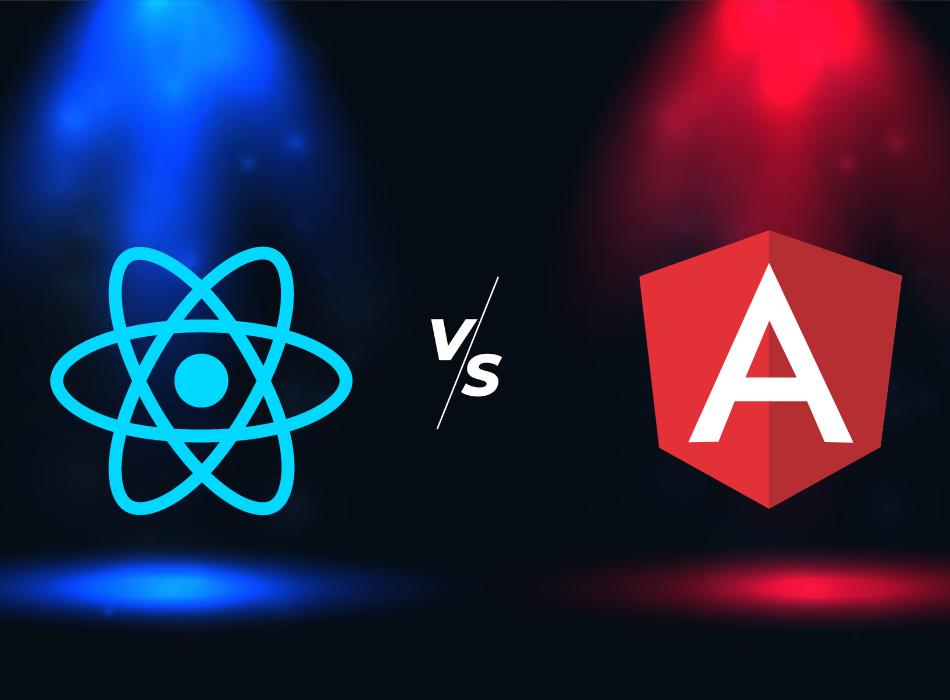React vs Angular
Which JavaScript framework is used for frontend?
The world of web development is brimming with JavaScript frameworks, ach one is competing for a prime location in your next project. Two of the most prominent contenders are React and Angular. Both are powerful tools, but they cater to different needs and development styles. This blog post will guide you through their strengths and weaknesses, helping you pick the champion for your front-end developers.
What is React?
React is a JavaScript library, whereas Angular is a front-end framework. React was made by Facebook and is a Javascript library for constructing inflexible ui components using reusable components. Think of it like lego blocks for web pages: you make many little independent pieces that can be used to build complex user interfaces. What this means is that react focuses on grouping things together tightly then letting them loose. This makes sense within contexts where we need lots of interactivity or dynamism – interactive web apps would be a good example here! One might say: “Why not both?” But really while both AngularJs (now just Angular) and …React? … are meant specifically towards front end development they do so from different perspectives.. Angular2+ has features specifically designed around making server side rendering easier while still being able run inside web workers etc. React on the other hand is all about the react is a javascript library for building user interfaces.
Here are some key points about React:
- Component-Based: Like Angular, React also follows a component-based architecture. It excels at creating dynamic UI components with rapidly changing data.
- JSX: React uses a syntax called JSX (JavaScript XML) to describe UI components. It allows developers to write code in JavaScript that looks like HTML, which makes it easier to create and manage user interfaces.
- One-way data flow: In React, data only moves in one direction – from parent components to their children. This approach makes debugging simple and behavior predictable.
- Virtual DOM: React uses a virtual DOM (Document Object Model) to optimize UI updates. It efficiently updates only the necessary parts of the actual DOM, improving performance.
- React Advantages:
Flexibility: React can be integrated into existing projects without a complete rewrite.
Performance: Virtual DOM minimizes unnecessary DOM updates.
Interactive UIs: React is great for building interactive and responsive interfaces

Advantages of React JS
-
Component-Based Architecture: React's building blocks are reusable
-
components, promoting code maintainability and easier collaboration.
-
Virtual DOM: React employs a virtual representation of the DOM, enabling faster updates and smoother performance.
-
JSX Syntax: JSX (JavaScript XML) blends HTML with JavaScript, making UI development more intuitive.
-
Large Community & Ecosystem: React boasts a massive developer community and a rich ecosystem of third-party libraries and tools.
Remember, React is a powerful tool for front-end development, and its component-based approach and performance optimizations make it a popular choice among developers. If you’re interested in learning more, consider exploring React training courses in Hyderabad or online platforms. Additionally, keep an eye on the latest updates – React 18 and React 19 Beta – to stay informed about new features and improvements
What is Angular?
Angular is a robust JavaScript framework, which is led by Google — it has everything. It provides tools and features as part of a comprehensive package; examples include dependency injection, routing or two-way data binding. Angular takes after an organised approach (that is perfect for any business application of substantial size with complex functionality). Google backs Angular entirely because google is responsible for Angular development. The most common use case scenario for this open source software would be creating large scale web applications easily.
Here are some key features that set Angular apart:
-
Component-Based Architecture: Angular emphasizes a component-based architecture, allowing developers to create reusable and modular elements. This promotes code modularity and reusability.
-
TypeScript: Angular is built using TypeScript, a statically typed superset of JavaScript. TypeScript provides better code quality, type safety, and maintainability.
-
Built-in Libraries: Beyond the core framework, Angular offers a collection of well-integrated libraries for functionalities like routing, forms management, and data communication with servers. These libraries speed up front-end development.
-
Two-Way Data Binding: Two-Way Data Binding: The simplification of data management between components and views is supported by Angular’s two-way binding capability.
-
Angular CLI: Angular Command Line Interface (CLI) equip
-
s one to create powerful tools for building and maintaining Angular applications.
-
Virtual Scrolling: Angular boasts of virtual scrolling which comes in handy when dealing with large lists or tables as it enhances performance.
-
Advantages of Angular:
-
Clean code development
-
Robust component-based architecture
-
TypeScript for improved code quality
-
Ease in building, maintaining, testing, and u
-
pdating
-
Built-in support for HTTP, AJAX, and Observables
-
Improved developer productivity

Benefits of Angular
-
Structure and Scalability: Angular's well-defined architecture guides development, making it perfect for complex and scalable projects.
-
Two-Way Data Binding: Changes in the UI automatically reflect in the model (and vice versa), simplifying data flow management.
-
Dependency Injection: Angular's dependency injection simplifies component creation and testing, leading to cleaner and more testable code.
-
Rich Ecosystem: Angular provides a robust ecosystem with built-in features and supported libraries for various functionalities.
For those looking to gain expertise in Angular, considering Angular online training in Hyderabad can be incredibly beneficial. This training provides comprehensive knowledge and practical skills needed to master Angular development.
Angular online training in Hyderabad offers numerous advantages including hands-on experience, access to expert instructors, and the opportunity to collaborate with peers. Such training ensures that learners are well-equipped to tackle complex Angular projects and leverage the full potential of this powerful framework.
Difference Between Angular and React JS
| Feature | React JS | Angular |
| Type | JavaScript Library | JavaScript Framework |
| Structure | Component-Based | Model-View-Controller (MVC) |
| Data Binding | One-way Data Binding | Two-way Data Binding |
| Learning Curve | Easier to learn initially | Steeper learning curve due to structure |
| Use Cases | Interactive UIs, Single-Page Applications | Large Enterprise Applications, PWAs |
React JS vs Angular: When to Choose What?
-
Choose React if:
-
You need a flexible and lightweight solution for building dynamic UIs.
-
Your project prioritizes rapid development and iteration.
-
You have a team familiar with JavaScript and component-based architecture.
-
You prioritize flexibility, performance, and building interactive UIs.
-
You’re working on smaller projects or need to integrate with existing codebases.
-
You prefer a library over a full-fledged framework.
-
Choose Angular if:
-
You're building a large-scale enterprise application with complex functionalities.
-
Your project demands a structured approach and built-in features for scalability.
-
Your team prefers a well-defined framework with two-way data binding.
-
You need a structured framework with built-in features for large-scale applications.
-
Scalability, maintainability, and structure are top priorities.
-
You’re comfortable with TypeScript and want a comprehensive solution.
Core Philosophy:
-
React: Focuses on building reusable UI components. Offers flexibility for structuring your application.
-
Angular: Enforces a structured Model-View-Controller (MVC) architecture for a more predictable development process.
Data Binding:
-
React: Uses one-way data binding. Changes in the UI flow in one direction to the data model. This requires explicit management of data flow.
-
Angular: Employs two-way data binding. Changes in the UI automatically reflect in the data model (and vice versa), simplifying data management but potentially leading to tighter coupling.
Learning Curve:
-
React: Generally considered easier to learn initially due to its focus on components and a more forgiving approach to structure.
-
Angular: Has a steeper learning curve because of its structured MVC architecture and potentially more complex concepts like dependency injection.
Applications:
-
React: Suitable for single-page applications (SPA), interactive User Interfaces (UI) and projects that prioritize rapid development and frequent updates.
-
Angular: Best for Progressive Web Apps (PWA), Enterprise Applications at scale and projects organized for growth built with in factors already included.
Choosing Between Them:
-
React: A good choice if you need flexibility, a lightweight solution, or prioritize rapid development with a familiar JavaScript codebase.
-
Angular: A strong pick if you're building a complex enterprise application, require a structured development process, or prefer two-way data binding for simpler data management.
Angular or React - Which is Better?
Let's talk about React and Angular. They are both great tools for building apps. React is simple and flexible. Angular is more powerful but also more complex. Choosing between them depends on your project's needs. React is easier to learn and change. Angular has more features built-in but takes more work. Small projects may do better with React's simplicity. Larger, complex projects may need Angular's capabilities. There is no single "best" choice - it depends on your goals and experience.



